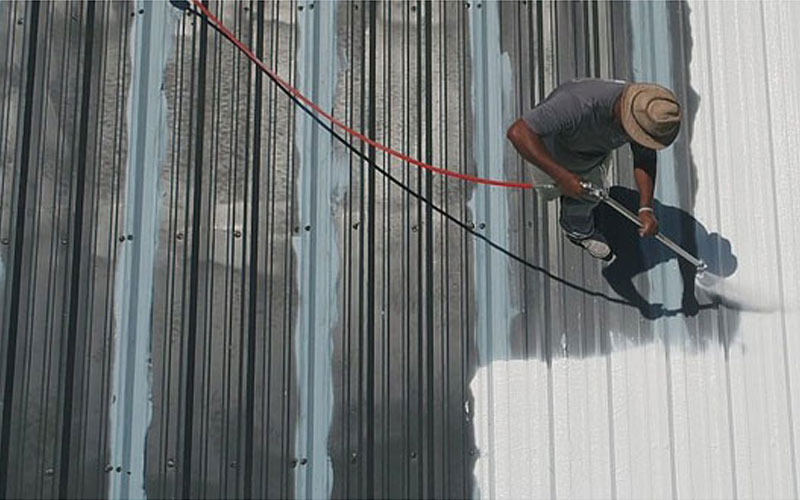Roof coatings play many important roles in preserving a roof, including keeping the surface clean and protected, staying strong even across wide temperature changes and hours of direct sunlight, and preventing the need for future repairs. Many factors must be considered when choosing the best coating for preserving the roof, one of the most important of these will likely be getting the stuff to stick.
Adhesion affects many other properties, a protective surface that can’t hold onto it’s surface can wear down faster in areas and leave the rest of the roof exposed to moisture and dirt build up. Bad adhesion can only get worse as the materials are worn down overtime and require more work to maintain. Therefore, it’s important to note what coatings do well with which materials, and when they might need a little help.
What is adhesion?
Each coating has different adhesive properties to different surfaces and can change based on the material’s chemical components or the surface’s physical properties. The atoms in the paint can form bonds between the surface and other components mixed in allowing for a tougher grip. At the same time, physical features such as small holes in a porous surface provide natural gaps to flow between helping the paint grip onto it’s intended surface. While a rough texture may help a coating adhere to it’s surface, too many uneven surfaces can also make it difficult to form a flat surface and weaken it’s sticking power. These features help a coating stay on longer, preventing it from breaking off or peeling as it continues to do it’s other jobs.
Why is adhesion so important?
A good coating should last as long as possible on it’s intended surface. Weak adhesion not only makes the coating ineffective, it may require replacement sooner than intended. It’s not just inefficient to apply a coating that improperly sticks, it’s a bad investment for the work to apply the material and the protective coating it could be providing.
What’s the differrence between adhesion and cohesion?
Adhesion is the ability for two different materials to stick to one another, while cohesion is the ability for one material to stick to itself. Just as the coating can form chemical bonds with the surface it’s applied to, the substances mixed in should also support bonds with it’s own compounds as it cures. This helps form a more durable coating and helps when applying a second coat of a similar paint. While the chemical properties with the roof are important for a coating’s sticking power, it’s also important to see how well it’s compounds interact with each other.
Do all roof coatings adhere properly to all roofs?
Not every coating is suitable for every surface. Not all surfaces offer bonds for chemical adhesion or have physical properties that aren’t suited for a specific coating. For example, some coatings do better with asphalt but will do worse on aluminum, the natural gaps may be easier to adhere to than a flat metallic surface for some paints or offer different chemical reactions. It’s important to read up on what materials a coating is designed for and how it should be applied.
What are some especially difficult surfaces for roof coatings to adhere to?
Some of the hardest materials to find adhesion for lack what is called surface energy. It becomes harder to form chemical bonds along the surface of these materials or are so flat it limits surface area to grip onto. For example, Aluminium Roof Coating Products can be difficult to adhere for many of these reasons, forming a surface that’s difficult to grip onto and less likely to create chemical bonds with most acrylic paints.
Some other difficult surfaces acrylic paint may not stick to include EPDM (synthetic rubber membrane), TPO (thermoplastic olefin), asphalt, and 100% silicone products.
What does it take for a roof coating to adhere properly?
First, the coating must be compatible with the roofing material. If a roof’s surface is made with concrete, then the coating must be designed with adhesion to that surface in mind. Otherwise, it will not work at all.
Second, the surface should be prepared beforehand to ensure it’s clean and burnished. Unwanted materials can get in the way of the adhesion and weaken the coating’s ability to stick to its intended surface. Therefore, it’s important to pressure-wash the roof’s surface to clear off any dirt or debris before applying paint.
Finally, the coating should be applied properly. Apply any coating in while the surface is dry and give it time to cure, otherwise it will not set well and will perform poorly from there on. Always have a roofing professional apply any coating to ensure it’s done properly.

